Why a Customer Acquisition Platform is the Most Critical Technology in your Marketing Stack
March 5, 2019 •Egan Montgomery
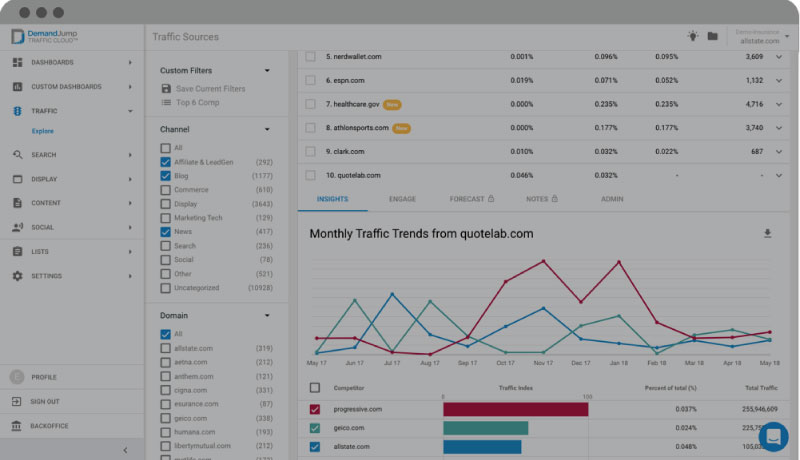
Whether you’re a CMO or a paid search manager, you have KPIs that are directly tied to customer acquisition. If you’re a growth marketer or an acquisition marketer, maybe all your KPIs are tied to customer acquisition metrics.
No matter the industry or company size, we can all agree that finding, capturing, and converting new customers is essential for the longevity and health of your brand. With each new market entrant stealing customer share from existing players, today’s disruptive marketplace demands it. To stay in the game, you can’t stop acquiring and reacquiring. It is, after all, the first step - the fuel to the revenue fire.
Yet, many marketers are not empowered with the necessary technology to enable efficient, profitable customer acquisition. Maybe that’s why the average tenure of a CMO is less than two years…
It’s a tough situation. We are empathetic. And in fact, we don’t blame the marketers at all.
The internet is a complete and utter nightmare for our profession. Thirty years ago, there were only a handful of acquisition channels to worry about (print, radio, tv, a few others).
Today, there are hundreds of thousands (if not millions) of potential sources of qualified traffic for your brand's site.
This is an actual traffic ecosystem for one of our smallest customers:
 Source: DemandJump Traffic Cloud®
Source: DemandJump Traffic Cloud®
On top of that, eCommerce, globalization, and modern shipping infrastructure have significantly lowered the barriers-to-entry for nimble competition to flourish.
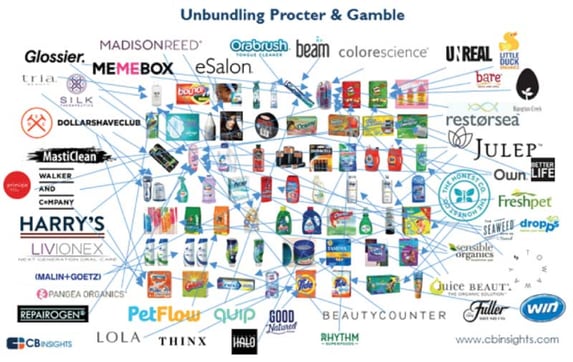
Source: cbinsights.com
Marketers are desperate for a platform that aligns to their customer acquisition challenges and goals. They need a platform that’s built to help increase revenue and eliminate wasted spend in this complicated, ever-changing digital world.
They need a platform that was built to handle the chaos of modern digital marketing, the internet, changing markets, and new advertising technology. Marketers need a tool to understand what is and isn’t working - for themselves and their competitors.
And though you may not know it yet, a customer acquisition platform is the most important technology in your marketing stack.
DemandJump is that platform. (Pro Tip: Try it for free!)
We will dive into the benefits about implementing a solution like the Traffic Cloud®, but first, let’s dive a little further into the problem.
Why marketers are getting totally screwed
Smart strategic marketing is really, really hard to achieve. Understanding your audience, balancing countless objectives, and adapting to changing tastes and preferences requires a rare mix of perception, creativity, analytical discipline, and downright persistence.
But those are just the basics. It assumes you have the right tools at your disposal, and the right information to power decision.
While there are countless reasons that contribute to our daily marketing woes, we’ll boil it down to three key buckets.
1.) Digital marketing is a total nightmare
Digital marketers have been dealt the worst hand of all.
The sheer complexity of digital marketing is practically incomprehensible.
There are more than 120 marketing and content delivery channels - a staggering number that is constantly growing. Plus, there’s a new medium introduced everyday. LIKE COME ON, WE’RE STILL TRYING TO FIGURE OUT VIDEO AND NOW WE HAVE TO DEAL WITH VR??
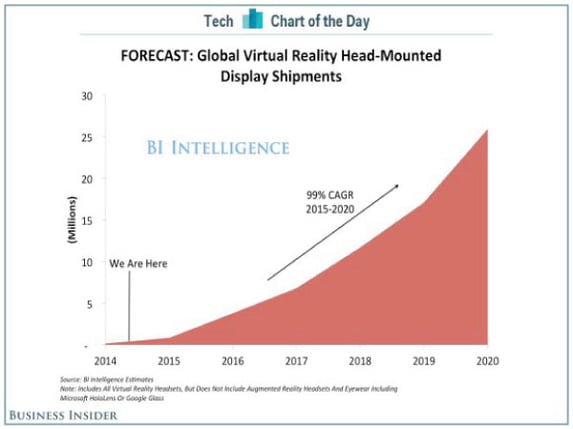
Source: businessInsider.com
We are drowning in data, yet technologies continue to fall short on delivering insights or actionable recommendations.
Take search for example. There are over 3.5 billion unique searches every day on Google (your competitive set alone has hundreds of thousands). Yet we expect paid search marketers to deliver absurd return on ad spend goals and optimize campaigns and ad groups in real time. While SEOs are required to make painstaking optimizations, build landing pages, craft content, and then wait for traction while slowly watching the market change before Google gives any sort of nod to their pages.
What about tools?
There are more than 7,000 marketing tools (if I see Scott Brinker’s martech landscape one more time I swear I’ll puke… but here it is anyways).
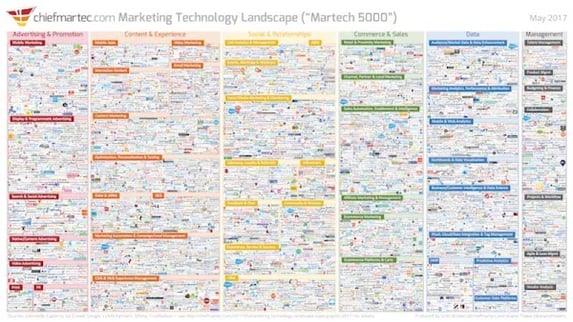
Source: chiefmartech.com
Most of them you have never heard of. The ones you have heard of probably suck, or solve one problem, in one channel. And even if they were all fantastic, how could you possibly sift through all 7,000, evaluate them, integrate them, and train your team properly.
Meanwhile, many traditional and digital marketers still rely on agencies to make strategic decisions, execute, and report, while the in-house marketers have limited control over their own results.
I’m only scratching the surface here.
Your data is jacked.
Your tools are jacked.
Your reporting is jacked.
You don’t have full ownership over your outcomes.
And your CEO is still asking the most fundamental of all business questions, “Where are my new customers?”
2.) Competitors are multiplying like bacteria
You know that old footage from middle school science class? It’s bacteria under a microscope and it’s replicating like crazy. It is truly the stuff of nightmares - enough to make all the germaphobes squirm for days.
Well right now, on the internet, that’s what your competitors look like. They are multiplying like bacteria. You can hardly keep track of them because there are so many.
Any Joe Shmoe with a halfway decent idea and the ability to build a website from a template now has the ability to compete on the global eCommerce stage.
I bet you have heard of a few of these brands before… And this is just major successes in apparel and fashion. These companies that were once viewed as ankle biters now have ankle biters of their own. Hell, even their ankle biters ankle biters probably have ankle biters. And one day, one of those “no names” is going to grow up and steal share from Walmart, Target, Macy’s, Nordstrom, etc...
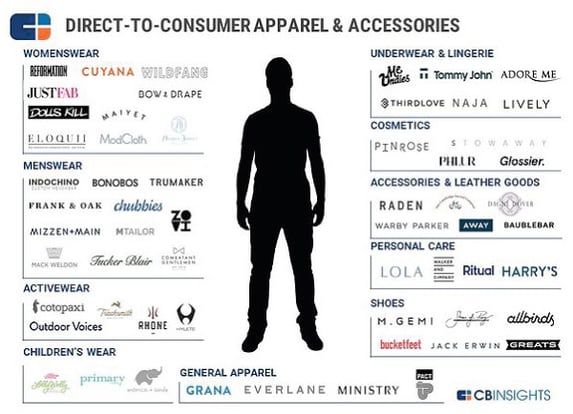
Source: cbinsights.com
There are several reasons for this explosion of competition, but most of it boils down to a lack of barriers to entry for eCommerce.
Technology is empowering more sellers to cross the chasm from idea to action.
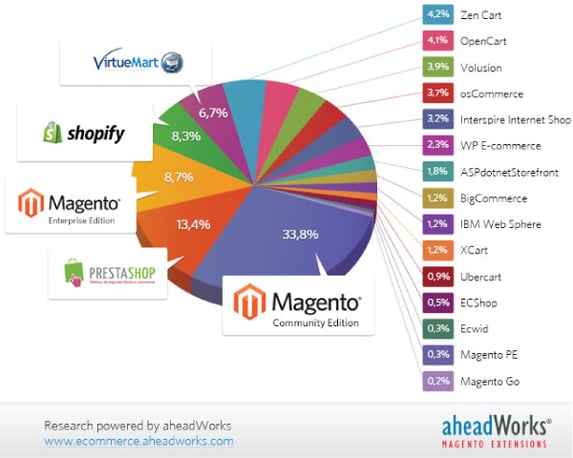
Source: aheadworks.com
Modern globalization has made it easy to source almost anything at an affordable rate.
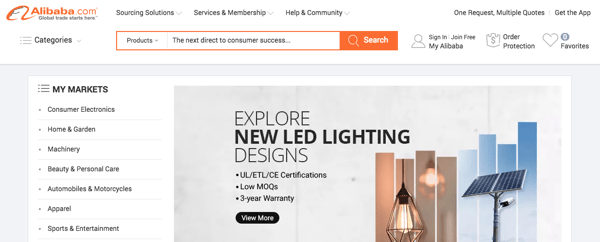
Source: alibaba.com
Shipping infrastructure and shipping technology enable us to pick, pack, and ship practically anything to anywhere.

Source: shiphawk.com
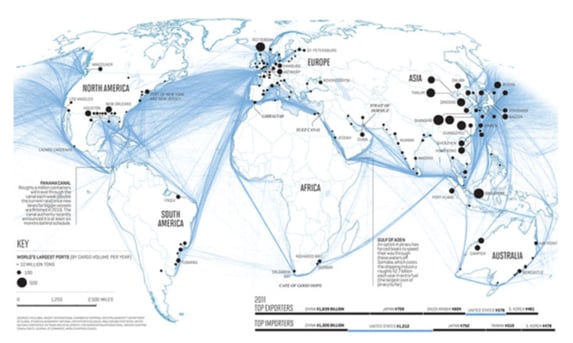
Source: Vox
I could go on, but I think you get the point.
Your competitors are exploding out of the woodwork.
And while consumer demand is still high, there are exponentially more players competing for pieces of the same pie.
Oh yeah, and then there’s this:
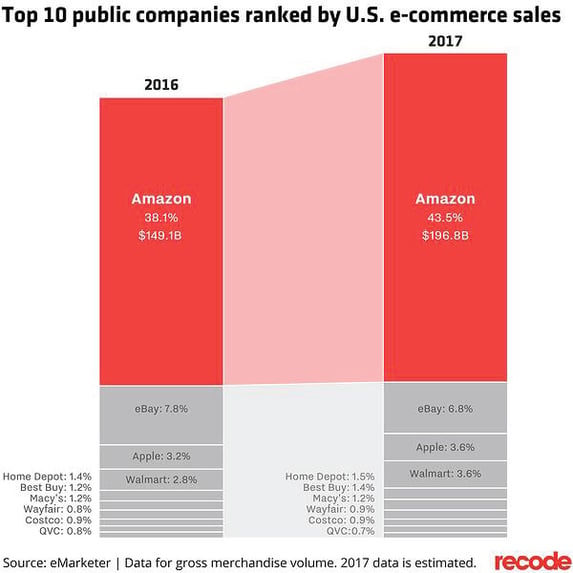
Am I stressing you out?
It’s not all doom and gloom. Many of the factors contributing to the explosion of competition also pose opportunities for you. It’s easier and cheaper to sell stuff online. You just need to know where to find more customers than your competition.
3.) Marketers are now being held accountable for revenue
As a marketer, you are now more than ever being held accountable for revenue. Your CEOs all think that because there’s data, and everything is supposedly trackable, and we have “multi touch attribution solutions” (insert robot voice), that we have the ability to attribute every marketing action to revenue.
To some degree, this is true. We do have a better gauge on what works and what doesn’t - especially when it comes to digital.
But to hold marketers accountable for revenue to the degree that a salesperson would be held accountable for revenue is a big ask. Marketers are still forced to use disparate reporting systems. Certain channels are far easier to track than others. And how do you account for each and every touchpoint, including on and offline?
We don’t know when decisions were made. Was it the display ad? A blog? A paid search keyword? Some combination of everything?
The reality is that revenue attribution in marketing isn’t about attribution at all.
It’s about budget allocation.
All your CEO really wants to know is where you should invest marketing resources to acquire customers and drive efficient growth.
What is a customer acquisition platform?
We really don’t like to paint such a gloomy picture.
The truth is, there is a ton of opportunity for brands like yours.
Consumers spending is at an all time high. They want what you’re selling. You just have to find them.
DemandJump’s Traffic Cloud® customer acquisition platform is built to help you do just that.
Our software enables marketers to acquire customers better than their competition. Traffic Cloud® sifts through the endless noise of channels, keywords, data, and competitors, and empowers marketers with the recommendations they need to allocate marketing resources in the right place.
Ok, that all sounds great.
But you want to know what that means.
So here it goes.
1.) Target your audience when and where they are ready to buy
One of the many great benefits of a customer acquisition platform is the ability to identify sources of traffic online where your customers are the most likely to buy something from you.
Marketers today spend a lot of time thinking about their audience.
Audience is extremely important, but so is the setting when they engage with your ad or marketing messaging.
- Is your customer in “buying mode”?
- Are they even paying attention to what you have to say?
Traffic Cloud® analyzes the many flows of traffic through the internet. By doing so, the software is able to identify the critical touch points on your should-be customers path to purchase (ie. the sites and sources that are most likely to lead to a conversion). This enables a marketer to focus their investments on the marketing initiatives that will generate the highest return
2.) Focus your time, team and spend where it matters most, and eliminate waste
Focus is a major theme when it comes to customer acquisition platforms.
Every marketer tasked with the difficult responsibility of selling “things” online knows what a mess the internet is.
They also know they don’t have the tools and technology they likely need to acquire customers fast, without wasting spend.
We’ve all had that night lying awake in bed when we question whether or not our campaigns are delivering the most revenue for the least spend.
Or worse, questioning whether we are missing a critical growth opportunity that’s hiding right under our nose.
These fears are warranted. In fact, it’s likely that many of your campaigns are not optimized. It’s likely that you are missing opportunities. We all have and we all do!
But we’re here to remind you that you are doing a great job. You are crushing it. With limited access to the right tools, plus the explosion of channels, and data, and competitors, it’s amazing to witness the truly heralding successes of marketers every day.
But imagine a technology that was built to directly address the chaos that is digital marketing today. Imagine a set of tools that was built for this decade, and not for the last one.
Traffic Cloud® brings order to this chaos. The software separates the vital few from the trivial many. It recommends where you should focus, where you should cut back, and where you are simply wasting your time.
It will save you time, save you money, and fuel fiery, delicious revenue growth, making your team the most irreplaceable group in your company because you always have an answer to that same old CEO question:
“Where are my new customers?”
3.) Outmaneuver your competitors, then crush them
Focus is paramount. Monitoring competitive threats in real time is equally as important.
The internet is constantly changing. We have the mathematics in Traffic Cloud® to prove it, but I think most of us understand that growth channels come and go.
They’re like fickle portals of gold that emerge from thin air, and quickly vanish as more marketers flock to the source and ruin the party.
That said, if you consistently outmaneuver your competition, always managing to stay one step ahead, you will always have a steady stream of effective growth channels funneling new customers to your website.
Eventually, your competition will catch on (along with the rest of the laggards), and you’ll be on to the next oasis while everyone else fights over the dinner scraps you left behind.
Traffic Cloud® is your real time map of where you should focus and refocus your resources to acquire customers more efficiently and effectively than your competition.
4.) Increase customer LTV through re-acquisition
We have spent a lot of time talking acquiring new customers.
New customers are really important, and it is far and away the most challenging thing in marketing. Once you know who someone is (ie. they have purchased something from you), you have access to more data on that person. You have their email address. You know what they bought and how much the spent.
However, re-acquisition is no walk in the park.
Luckily, all of the same principles that apply to new customer acquisition also apply to re-acquisition.
Think about it.
Your customers are still interacting with websites. They are still searching for things online. They still might be evaluating your competitors the next time a purchase decision is made. You still need to understand the way your audience is flowing through the internet and where you should position your company to acquire customers for a second, third, fourth, and nth time.
Combining a focused and deliberate acquisition strategy with an equally focused re-acquisition strategy will deliver massive increases in traffic and revenue for your business.
5.) Accurately attribute value to acquisition efforts (aka be the hero)
We said that marketers are being held accountable for revenue. You know it’s true. I’m sure you have even felt the pressure already from your CEO or CFO.
Attributing every marketing action to revenue to inform budget allocation is a difficult thing to do. There are a lot of digital marketing touch points that are critical in generating a new conversion, but they might not be tied directly to an action.
How do you value a display ad that registered in a future customer’s mind, but wasn’t clicked?
What if an influencer publishes about your new product on their blog and a customer sees it but doesn’t click the link. Then they convert later on.
What if your customer hears you on a podcast and then searches your brand name on Google? Was that a referral from the podcast? Or was it sourced from organic search?
The point is that marketing attribution is really hard. Most companies try to solve it by looking at one customer at a time. Let’s ignore all the data privacy issues (that’s a whole other blog in and of itself), but looking at attribution on a per customer basis is simply not effective and not accurate.
Because Traffic Cloud® is built for customer acquisition, we developed the attribution reporting around the way customers “flow” through the internet. We don’t care about the “car” (or the single customer), we care about the “highway” (the flow of customers).
We can then use algorithms to determine how much a marketing action contributed to revenue, and more importantly, we can make budget allocation recommendations. Traffic Cloud® helps show marketers where to spend their money, what the right mix of sources is, and how much should be invested into each source to maximize revenue.
We then tie your marketing actions to revenue and wrap it in clean, easy dashboards so you can report to your team.
Conclusion
Marketers are dished a crappy hand.
You are up against multiple, relentless foes:
- Too much data
- Too many tools
- Too many competitors
- Too many sources
And you’re all fighting with at least one hand tied behind your back because you don’t have access to the right technology.
If you hear this story, if you feel this pain, then try DemandJump today - for free. Try it free and see just how easy it all can be.
Featured Articles
Categories
- Attribution Tracking (13)
- Channel Optimization (11)
- Consumer Insights (68)
- Content Marketing (251)
- Data Science (8)
- Digital Marketing (6)
- Digital Transformation (26)
- Enterprise (10)
- Lead Generation (14)
- Market Intelligence (8)
- Marketing Analytics (39)
- Marketing Attribution (57)
- Marketing Management (153)
- Marketing Operations (86)
- Organic Search (222)
- Paid Search (52)
- Pillar-Based Marketing (63)
- Programmatic Advertising (9)
- SaaS Content (14)
- SaaS Marketing (29)
- Search Marketing (111)
- SEO Keyword Research (28)
- SEO Pillar (18)
- SEO Strategy (46)
- SMB (5)
- Website Content (12)



